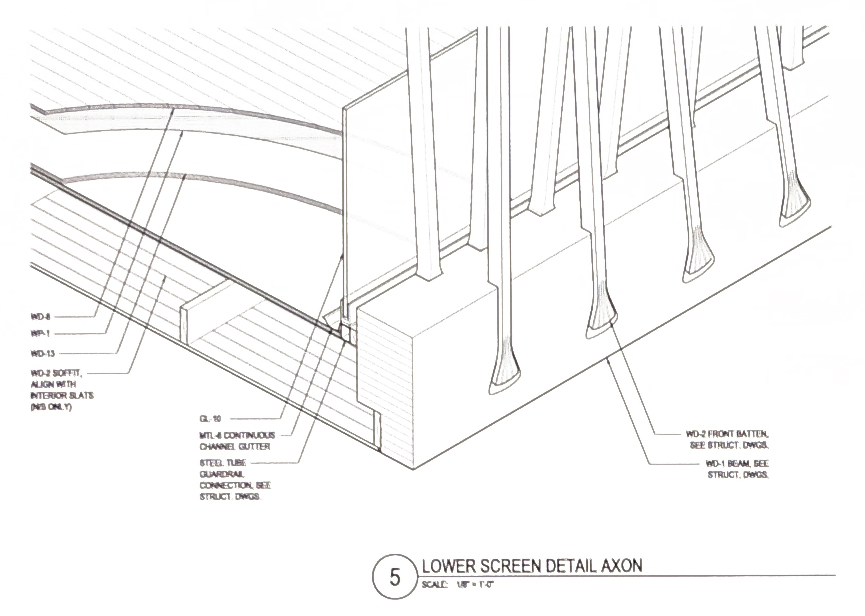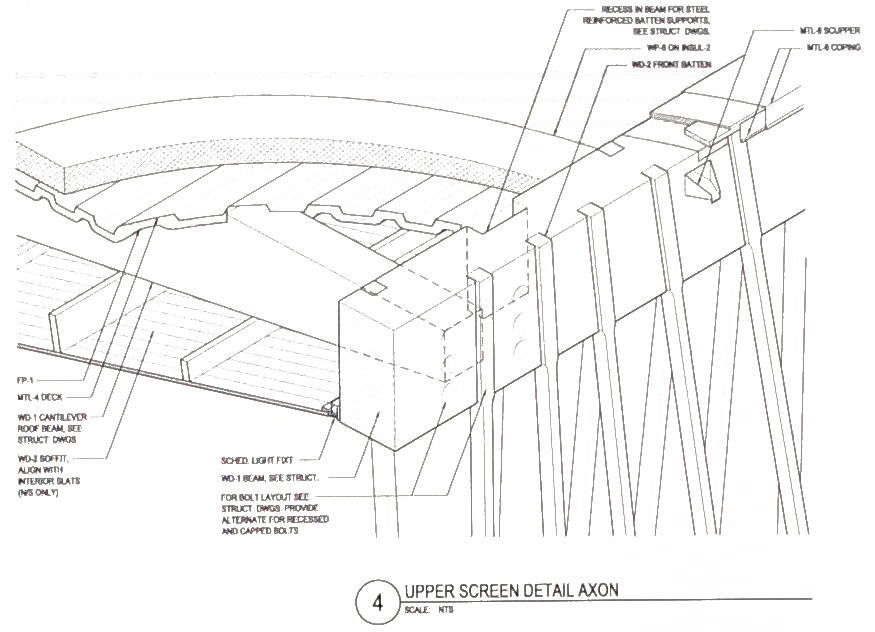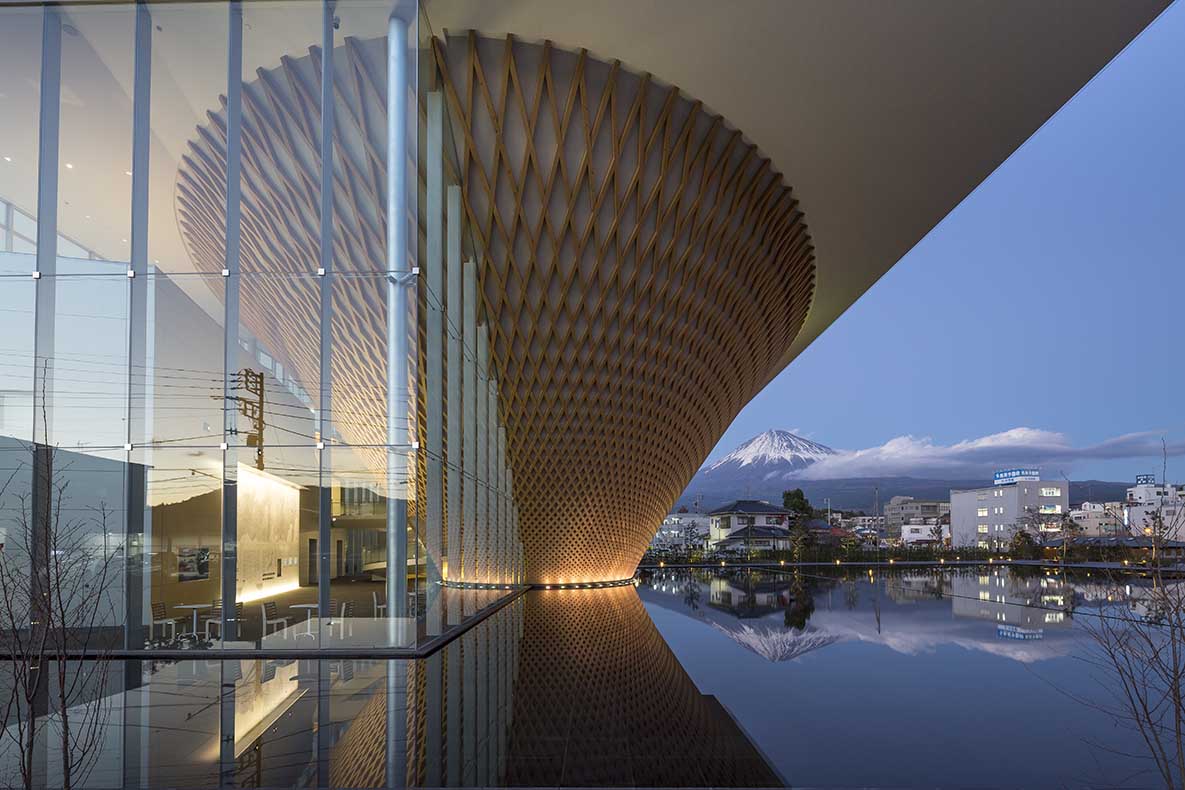The winners of the 13th Architizer A+Awards have been announced! Looking ahead to next season? Stay up to date by subscribing to our A+Awards Newsletter.
It’s been an exciting few years for Jeanne Gang of Studio Gang Architects. Her firm is currently hard at work developing soaring sequels to the celebrated Aqua Tower, with Chicago’s rippling Vista Tower, New York’s crystalline Solar Carve Tower and the twisting MIRA Tower in San Francisco all set to emerge across the United States in the coming months. But this exhilarating period of high-rise design was preceded by an innovative project on a more modest scale: the Writers Theatre in Glencoe, Illinois, hosted its first performance in spring of 2016.
Sitting down with the architect in her New York studio — an intimate, light-filled space atop a 1930s building in the heart of Downtown Manhattan — Gang’s enthusiasm for the building was palpable. “It’s really exciting to envisage them performing here,” she said with a smile, pointing at a gently glowing volume in a photograph of the finished project.

© Steve Hall
Gang’s passion for Glencoe’s new cultural node is as much owed to the building’s adventurous path to completion as it is for the finished result. The Chicago-based firm used entirely new fabrication techniques and bespoke solutions for numerous parts of the structure, taking Gang into new territory and encouraging an unparalleled relationship between architectural and manufacturing branches of the design process.
Tracing the outlines of the building’s defining feature — an effortlessly light lattice of timber elements floating above a multifunctional lobby space — Gang cites an extraordinary range of influences, from Elizabethan England to the trailblazing principles of 20th-century Modernism.

© Steve Hall
“Towards the end of the 1500s, there was an expansion of the middle class in England, and they started building big timber buildings,” explained Gang. “All these theaters were built in the same short period, that’s when the Modern Era of theater began — theaters like The Globe, The Swan and The Rose. Mies [van der Rohe] really looked at these buildings because their frames were so pure. Before that, everything was load-bearing masonry. All these ideas converged, and we realized we wanted to do something with timber.”
While many of Gang’s precedents for the project were centuries old, her desire for a seemingly weightless structure for the landmark lobby necessitated highly contemporary construction techniques. Enter Trillium Dell, a local timberworks company tasked with the fabrication of a bespoke frame that would provide a distinctive, cage-like aesthetic for the theater’s main stage.


“This is a really interesting detail, which we call the cat’s paw,” described Gang, pointing to the splayed end of each structural element that allows for a solid bond with the larger timber beams. “You couldn’t simply bolt through it because it’s so thin and light; you would have to take out so much material. So instead you splay the timber out, you insert more wood in between, and then the shape creates a strong connection.”

Studio Gang’s innovative “cat’s paw” connection detail; image via Studio Gang / Chicago Architecture Biennial

Upper section of façade connection detail; image via Studio Gang / Chicago Architecture Biennial
The unusual manufacturing process and dramatic scale of certain structural elements called for some serious improvisation on the parts of the fabricators, as Gang described: “The main beam was six feet too long for their building … so they actually put a hole in their building!”
The trials and tribulations of the team were worth it, though. The finished volume reads as an elegant beacon of light, reminiscent of Mies van der Rohe’s delicately detailed steel buildings but with the warm, soft qualities of Port Orford cedar.

© Steve Hall
Gang worked closely with acoustic engineers, lighting designers and a theater consultant to establish the optimal layout for the main theater, working through “a bazillion iterations” to arrive at a plan that would accommodate 250 people while retaining a real sense of intimacy. Throughout the finished arena — a semicircular space situated at the heart of the complex — further material innovations are present.
“There was a house on the site that we took down, and we recycled the bricks and reassembled them in this acoustic pattern,” explained Gang, describing the tireless work required to formulate the ideal masonry bonding to create an intimacy of the spoken word. The finished tapestry of brick is rich with texture, providing a subtle, strikingly lit backdrop for performances.

© Steve Hall
The theater’s credentials were tested and ultimately borne out with the institution’s opening performance in the spring of 2016. Public reception of the project has been hugely positive.
“People have said, ‘This is what Glencoe needed.’ I think people can see how this theater can really expand their educational role,” reflected Gang. “It can function for so many different kinds of performance, and all of that, to me, is the connecting dots. It aims to aid the village of Glencoe in becoming what its residents want it to be, which is a much more pedestrian-friendly, walkable downtown. I hope the building can help that.”
For more insight on the Writers Theatre and many other projects on the drawing board of Studio Gang, explore the firm’s in-depth profile on Architizer.
The winners of the 13th Architizer A+Awards have been announced! Looking ahead to next season? Stay up to date by subscribing to our A+Awards Newsletter.




